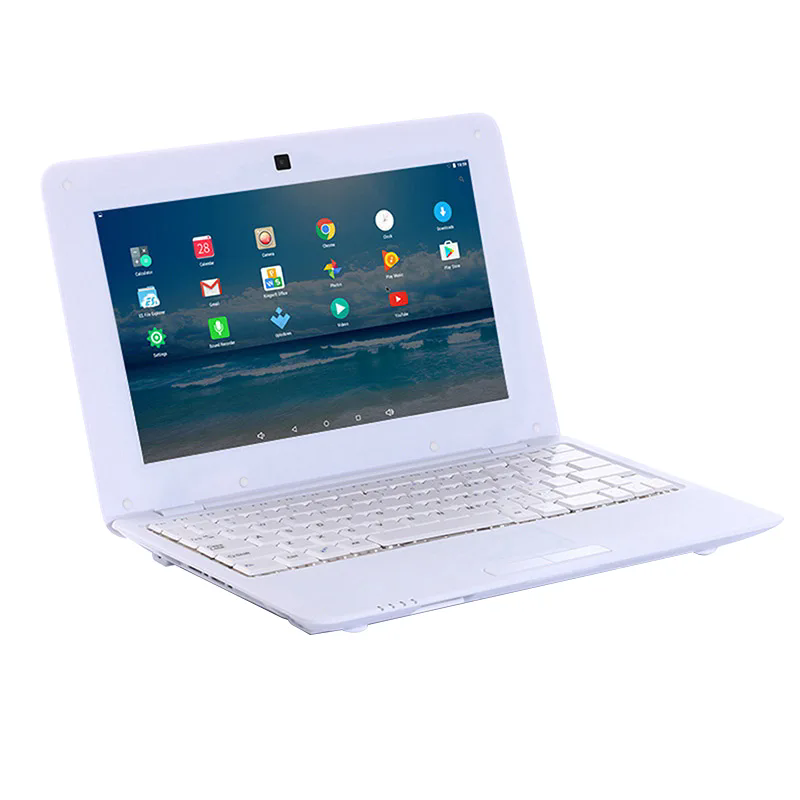Everything You Need to Know About Android AIO (All-in-One) Systems
2025-01-13
What is an Android AIO (All-in-One) System?
An Android AIO (All-in-One) system is a type of computing device that combines the functionality of an Android operating system with an integrated display and all the necessary hardware components, such as a processor, memory, storage, and input/output interfaces, into one compact unit. Unlike traditional desktop setups, where you need separate monitors, CPU towers, and peripherals, an AIO Android system is a streamlined solution where everything is housed in a single unit, typically in the form of a touchscreen display.
These devices run on the Android OS, providing users with the familiar Android interface while supporting apps designed for smartphones and tablets. Android AIO systems are popular in various industries, including retail, education, entertainment, and hospitality, thanks to their versatility and ease of use.
How Does an Android AIO Differ From Traditional Desktop PCs or Tablets?
There are a few key differences between Android AIO systems and traditional desktop PCs or tablets:
1. Form Factor:
- Android AIO: All components, including the processor, memory, and screen, are integrated into a single unit, making it more compact and less cluttered compared to traditional desktop systems.
- Traditional Desktop: A typical desktop setup requires separate components, such as a monitor, CPU tower, keyboard, and mouse.
- Tablet: While tablets share the all-in-one characteristic, Android AIO systems are typically larger, designed for stationary use, and usually include additional ports and connectors.
2. Operating System:
- Android AIO: Runs on the Android operating system, making it compatible with a wide range of mobile applications and offering a user-friendly interface.
- Desktop PC: Traditional desktops typically run on operating systems like Windows or Linux, offering more powerful functionality for tasks like programming, graphic design, and gaming.
- Tablet: Tablets also run Android (or iOS for Apple devices), but they tend to have more limitations in terms of hardware performance and input options compared to AIO systems.
3. Input Methods:
- Android AIO: Most Android AIO devices feature touchscreen capabilities, allowing users to interact directly with the display. Many also support traditional input methods like keyboards, mice, or stylus pens.
- Desktop PC: Desktops require external devices such as a mouse, keyboard, and monitor.
- Tablet: Tablets have touchscreens but lack the larger display and more robust capabilities of an Android AIO system.
What Are the Main Benefits of Using an Android AIO System?
There are several compelling reasons why businesses and individuals might opt for an Android AIO system:
1. Space-Saving Design: With everything integrated into a single unit, an Android AIO saves valuable space compared to a traditional desktop setup, reducing clutter and making it ideal for environments with limited space (e.g., small offices, retail counters, or hotel lobbies).
2. Ease of Use: The Android OS provides a familiar, user-friendly interface that most people are already accustomed to from their smartphones and tablets. Additionally, most AIO devices come with touchscreen interfaces, making them intuitive to use.
3. Cost-Effective: Since Android AIOs integrate multiple components (such as the display, processor, and storage) into one device, they are often more affordable than buying a separate computer, monitor, and peripherals.
4. Flexibility and Versatility: Android AIO systems can support a wide variety of Android apps, including productivity tools, point-of-sale (POS) software, media players, educational apps, and more, making them highly versatile for various use cases.
5. Low Power Consumption: Compared to traditional desktop computers, Android AIO systems typically consume less power, making them more energy-efficient and environmentally friendly.
6. Seamless Integration: Many Android AIO systems are equipped with built-in Wi-Fi, Bluetooth, and USB ports, allowing easy connection to other devices and peripherals without the need for complicated setup procedures.
What Are Some Common Applications of Android AIO Systems?
Android AIO systems are used in a variety of industries and settings due to their convenience, ease of use, and flexibility. Some common applications include:
1. Retail and Point-of-Sale (POS) Systems: Many businesses use Android AIOs for their POS systems. With built-in touchscreens, card readers, and various payment options, these systems allow employees to process transactions quickly and efficiently.
2. Digital Signage and Kiosks: Android AIO devices are often used for digital signage displays and interactive kiosks in places like shopping malls, airports, museums, and hotels. The touch capabilities allow users to interact with the content, whether for informational purposes or self-service.
3. Education: In schools and universities, Android AIO systems are commonly used as interactive whiteboards or learning stations. Teachers can use them to display content, while students can engage directly with the material via touch input.
4. Hospitality: Hotels, restaurants, and resorts use Android AIOs for self-check-in kiosks, ordering stations, and digital room service menus, improving customer service and streamlining operations.
5. Healthcare: In healthcare facilities, Android AIO systems are used for patient check-in systems, electronic medical records (EMR) access, and as nurse station terminals, helping to improve workflow and enhance patient care.
6. Entertainment: Android AIO systems are also used in gaming centers, arcades, and video conferencing rooms where a large touchscreen interface is needed.
What Are the Key Features to Look for in an Android AIO System?
When choosing an Android AIO system, it's essential to consider the following features to ensure it meets your needs:
1. Display Size and Resolution: Depending on the application, the display size and resolution can be crucial. For POS systems, a smaller screen might suffice, but for digital signage or educational purposes, you may need a larger, high-resolution display for better clarity and user interaction.
2. Processor and RAM: The processing power of the AIO is critical for handling tasks smoothly. For basic functions like browsing and running apps, a mid-range processor and 2-4 GB of RAM might suffice. However, for more demanding tasks like video playback or multitasking, a faster processor and higher RAM capacity may be necessary.
3. Connectivity Options: Make sure the device offers the necessary connectivity options, such as Wi-Fi, Bluetooth, USB ports, and Ethernet. These options ensure that the device can connect to other equipment and networks.
4. Touchscreen Capability: The responsiveness and accuracy of the touchscreen are important, especially for tasks that require frequent user input. Consider whether the system supports multi-touch gestures and if the screen is anti-glare for better visibility.
5. Operating System Version: Ensure the Android version running on the AIO system is up-to-date, as older versions may not support the latest apps or security patches.
6. Build Quality and Durability: If the AIO is going to be used in a high-traffic environment, such as a retail store or hospital, durability is essential. Look for devices made with strong materials like metal or high-quality plastic that can withstand wear and tear.
7. Mounting Options: Some Android AIO systems come with the ability to be wall-mounted or placed on a stand, which can be essential for digital signage or kiosk applications.
Are There Any Drawbacks of Using an Android AIO System?
While Android AIO systems offer many benefits, there are some potential limitations:
1. Limited Customization: Since Android AIO systems typically come pre-configured, there may be fewer customization options compared to traditional desktops, especially for users who require specialized hardware or software setups.
2. Performance Limitations: While they are great for everyday tasks, Android AIO systems may not be powerful enough for more resource-intensive applications like video editing, 3D rendering, or gaming.
3. Less Software Variety: Although Android offers a wide selection of apps, it may not support specialized desktop software that certain industries or users require, like certain professional design or development tools.
4. Upgradability: Many Android AIO devices are not easily upgradable. Unlike traditional desktops where you can upgrade the RAM, storage, or graphics card, the integrated nature of an AIO means you may be limited in terms of upgrades.
Conclusion
Android AIO (All-in-One) systems provide a compact, cost-effective, and versatile solution for a wide range of applications. With their built-in touchscreen functionality and Android OS, they are perfect for retail, education, healthcare, and digital signage, among many others. Whether you need a simple device for browsing and productivity or a robust system for business operations, an Android AIO can meet a variety of needs with ease. By carefully considering the system’s size, processing power, connectivity, and durability, you can choose the best Android AIO system for your requirements.



